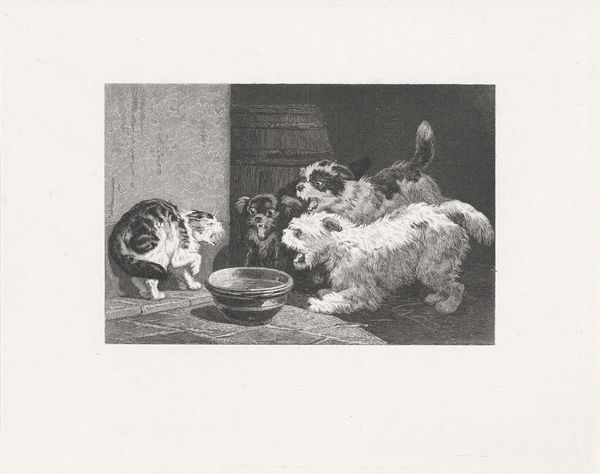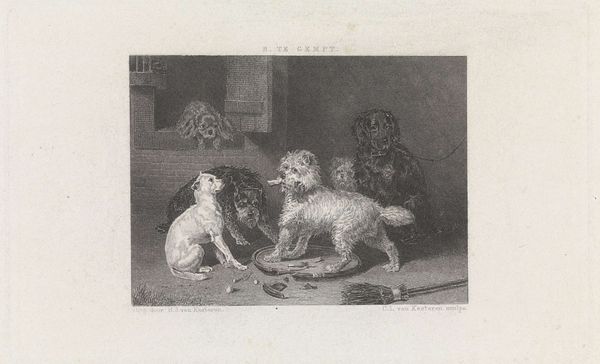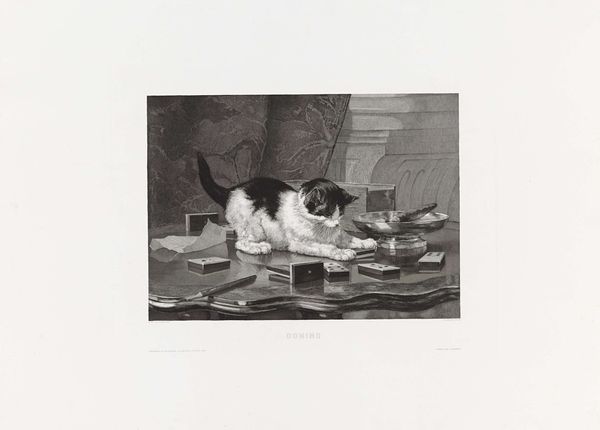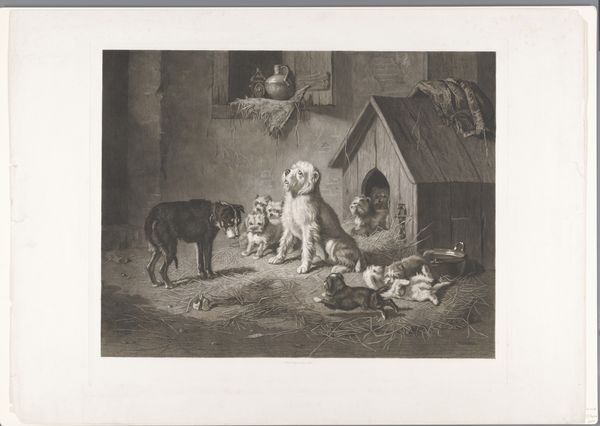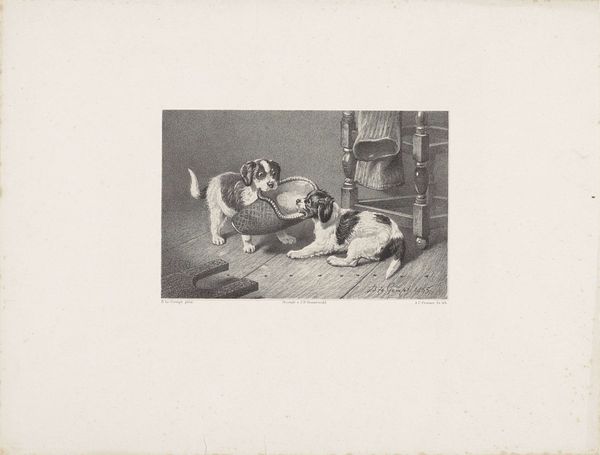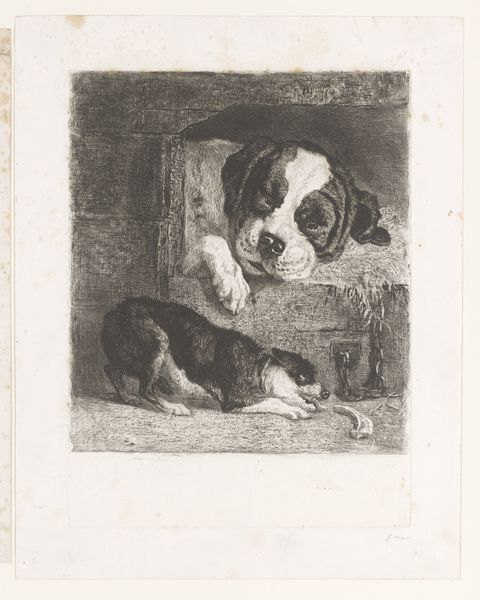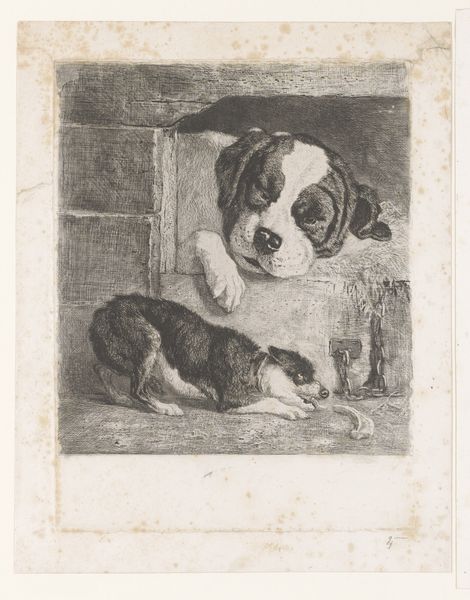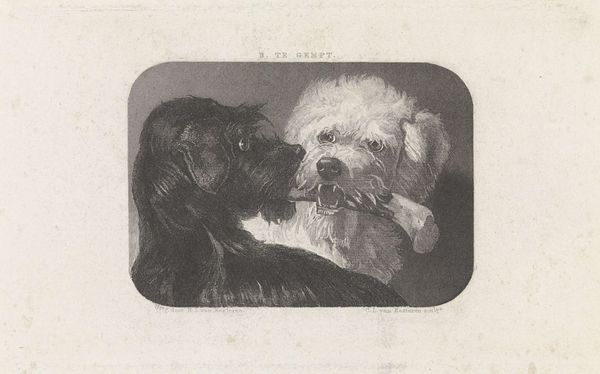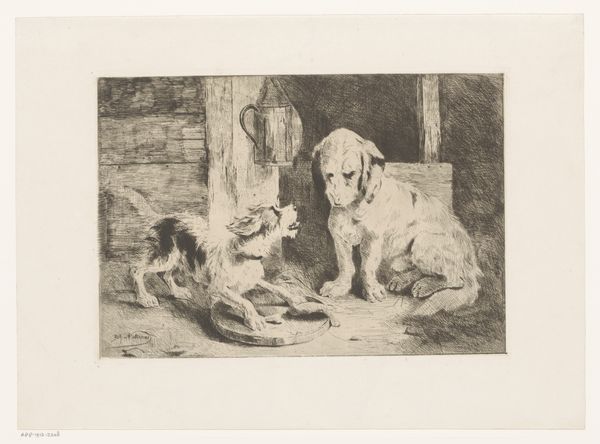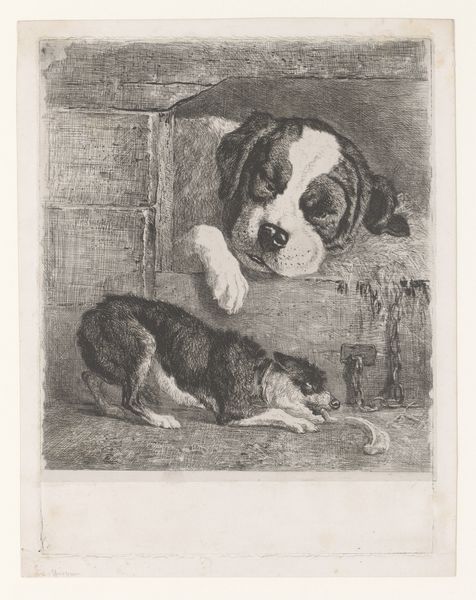
drawing, print, etching, graphite
#
pencil drawn
#
drawing
#
animal
# print
#
etching
#
pencil sketch
#
dog
#
charcoal drawing
#
pencil drawing
#
graphite
#
genre-painting
#
graphite
#
realism
Dimensions: height 398 mm, width 572 mm
Copyright: Rijks Museum: Open Domain
Curator: Here we have Edouard Taurel’s “Blazende kat en drie blaffende honden bij een schotel,” dating from 1871. The medium is etching and graphite. Editor: What strikes me immediately is the intensity of the scene. The diagonal composition focuses all that pent-up energy towards the middle and the food bowl. The body language of these animals is expertly captured! Curator: It’s a fascinating study in animal behavior, and Taurel was a master of capturing such scenes. This work gives an interesting glimpse into the prevalent attitude towards domestic animals within 19th-century genre paintings. These are no sentimental pets; they’re creatures caught in a territorial dispute. Notice the use of hatching and cross-hatching in creating depth and form, but the relatively flat, frontal rendering style retains a traditional sense of space. Editor: The bowl becomes the nexus of their animosity. Is the dish empty? Are they contesting the vessel itself or simply the implied right to ownership and satiation it offers? The open mouths and tense muscles throughout demonstrate a certain symmetry, visually pitting cat against canine. Even if their coats and breeds vary considerably, the stark monochromatic scheme simplifies a deeper animalistic reading. Curator: Indeed. This work can be interpreted through the lens of Social Darwinism which rose in popularity during this era. This reflects the growing interest in observing and classifying behaviours, and understanding social dynamics through a 'natural' hierarchy. It captures a conflict that is primal. Consider the socio-economic elements influencing animal ownership during the period. These domestic conflicts, if viewed politically, symbolize struggles between different factions competing for finite resources. Editor: A very compelling historical perspective, revealing societal tensions mapped onto the natural world! For me, though, the stark contrast, combined with its expert rendering, brings forth an honest animalism which feels more at peace. The dramatic perspective also provides a direct point-of-view, placing one immediately within the setting. Curator: True. By considering the social currents impacting art during that time, we see that Taurel tapped into prevalent social ideologies concerning competition, power dynamics, and natural hierarchies to portray the mundane. Editor: Ultimately, whether symbolic or instinctual, it’s a tense scene that has the ability to evoke a universal struggle. Thanks for giving the background context, now, let's talk more about Realism, generally!
Comments
No comments
Be the first to comment and join the conversation on the ultimate creative platform.
